[Ebook Việt Hóa] New Plant Parent - Darryl Cheng, Chi Zamioculcas
[Ebook Việt Hoá] New Plant Parent (Darryl Cheng) – Phần 02 – ZZ Plant (cây thuộc chi Zamioculcas)
- Nguồn: [Ebook] New Plant Parent: Develop Your Green Thumb and Care for Your House-Plant Family – Darryl Cheng
- Biên tập: Dũng Cá Xinh (Tháng 01/2022)
- Dịch: Team Codai.net
English
ZZ Plant
The ZZ plant (Zamioculcas zamiifolia) is a low-light succulent that tolerates a great range of light levels and soil compactness. It’s fascinating to watch the growth progression from the “bud” to a full-fledged frond. Basically, the ZZ plant is a slow grower—you may get just two or three of these buds each year. When buying a ZZ plant, I’d recommend looking for a specimen that has a few unopened stems, so you’ll have something fun to witness over the next few months.
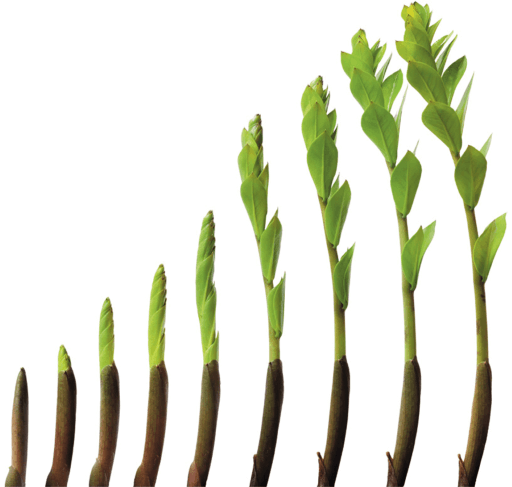
Survival strategy
The ZZ plant is another favorite candidate for “thrives in low light.” However, at anything less than 50 foot-candles, you can expect your ZZ plant to behave like a green statue. Since the bulbous base of the stem can store a large amount of water, the soil can be left completely dry for months. Within a few weeks, though, expect to cut off some of the smaller stems as the leaves yellow. You might experience fewer yellowed stems if you aerate the soil occasionally—at this light level, you’ll be aerating more often than watering! At the odd times you do water, if you bring the soil to saturation, it would be wise to move the plant right up to a window for a few days so that that water can be utilized. Perhaps you’ll “see the light” and leave the plant by that window so it can truly thrive!
Growth strategy
A ZZ plant will grow just fine anywhere from 100 to 1,000 foot-candles. The greater the light intensity, the sooner the soil will become bone dry, which is the right time to water. Since the ZZ plant is tolerant of compacted soil, you can loosen it carefully every other watering. Avoid poking around too close to the stems, because you might pierce the thick underground rhizomes. When you see several new stems emerging, you can safely help them along by fertilizing at this time.
Subjective life span
In lower light, the ZZ plant can act like a green statue, hardly growing but with very little decay. With brighter light, you’ll enjoy new stems as older ones flop over. Some may turn yellow or brown—just cut them off. Healthy tubers will keep producing new shoots. Refreshing the soil every few years will help keep things going.
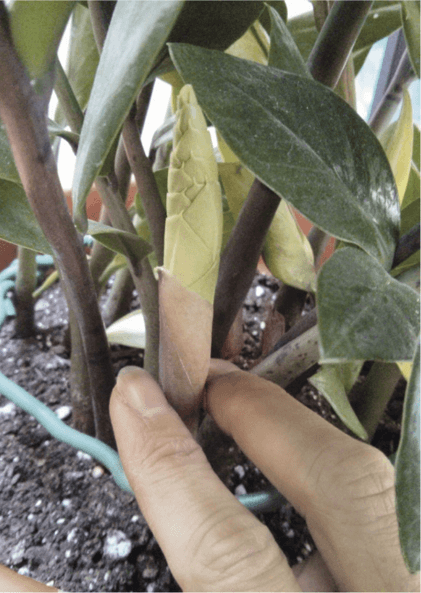
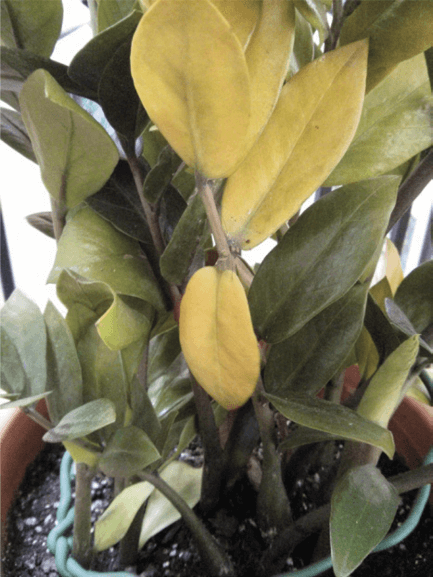
Observations from ZZ Plant Parenthood
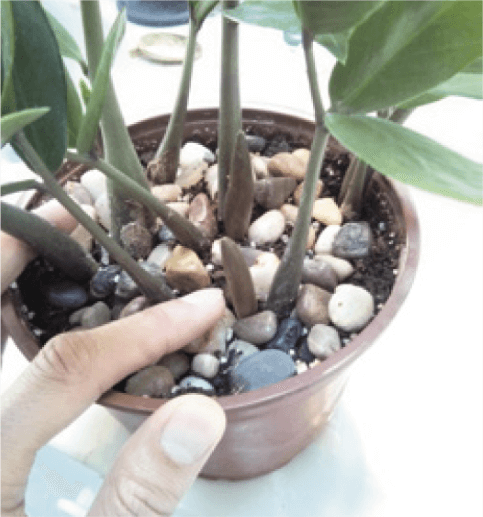
Day 1
I chose this ZZ plant because it had two new stems ready to put on a show for the next few months. I thought the rocks would be a nice touch, but I didn’t continue with that after the subsequent repottings
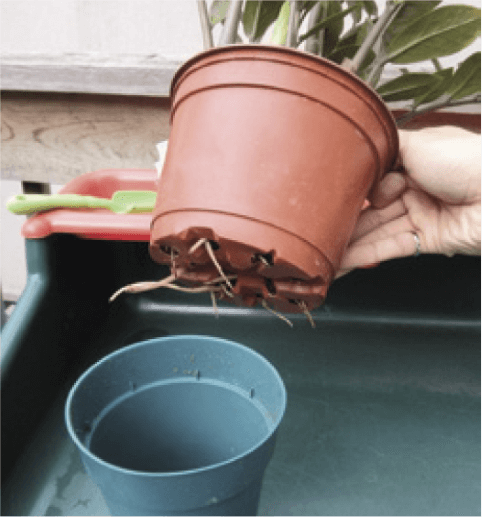
2 months
Roots coming out of drainage holes is the first sign that you should consider checking the root situation inside the pot . . .
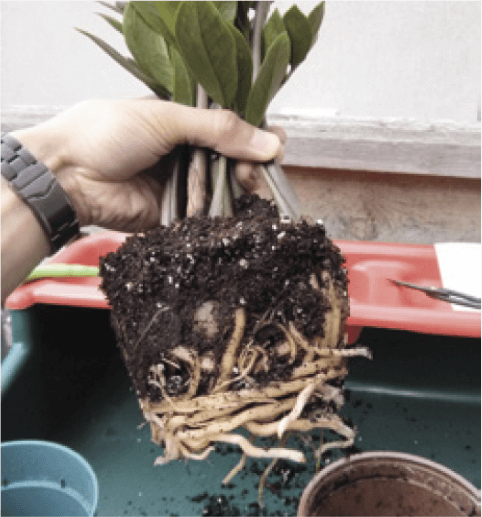
. . . and roots coiled up around the bottom of the pot, completely filling the space instead of soil—that’s the clear signal to proceed with repotting!
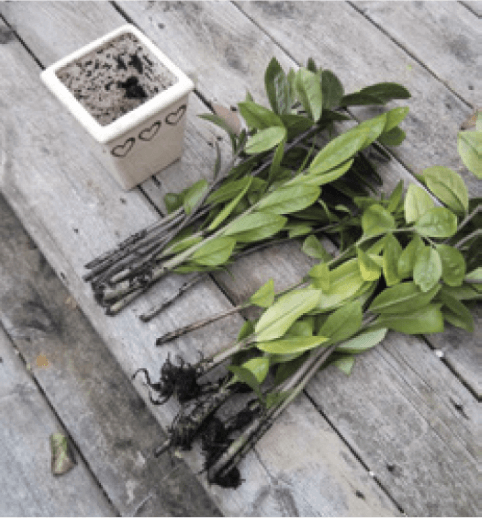
6 months
I was eager to increase my collection of ZZ plants, so I responded to a classified ad for two “established” ZZ plants. Upon closer inspection, the soil looked like outdoor topsoil, which is much too dense and water retaining for the ZZ plant. I unpotted the stems and found they were not even rooted!
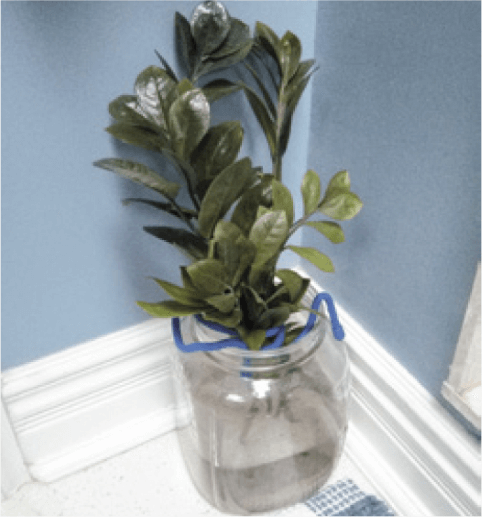
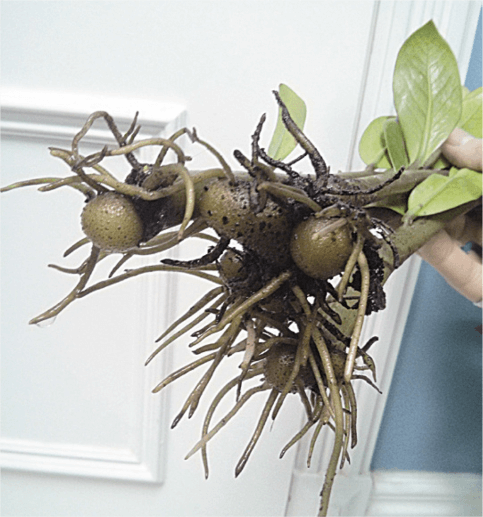
10 months
Success! After four months of rooting in water, most of the stems began growing their own rhizomes. They can be trans-planted at this point. I added them to my existing ZZ plant, transplanting them into a new, larger pot.
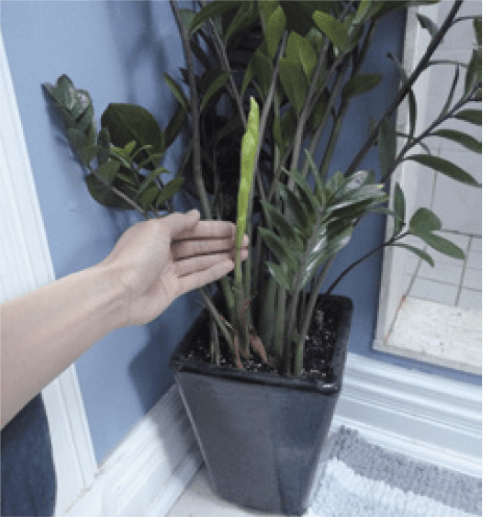
1 year, 4 months
The new amalgamated ZZ plant looks happy—it’s putting up new shoots while getting 100 to 200 foot-candles in my bathroom. At this light level, I’m watering roughly on a monthly basis, but I honestly don’t keep track.
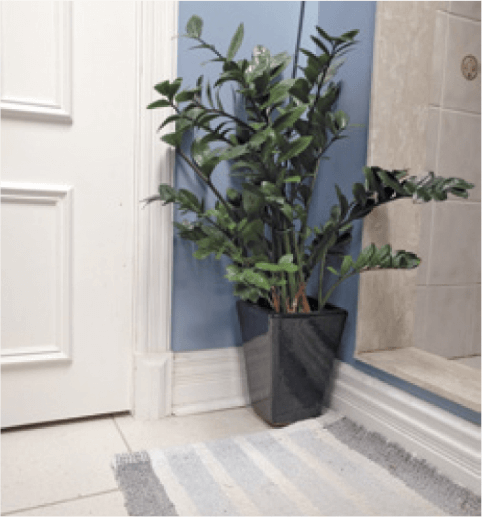
2 years, 4 months
Many of the older stems are getting floppy, so I’ve affixed them to a bamboo stake. It’s probably ready for another repotting now.
Tiếng Việt
Đang cập nhật
![[Ebook Việt Hoá] New Plant Parent (Darryl Cheng) – Phần 02 – ZZ Plant (cây thuộc chi Zamioculcas) [Ebook Việt Hoá] New Plant Parent (Darryl Cheng) – Phần 02 – ZZ Plant (cây thuộc chi Zamioculcas)](https://vn1.vdrive.vn/codai.net/2021/02/30-zz-plant.jpg)


